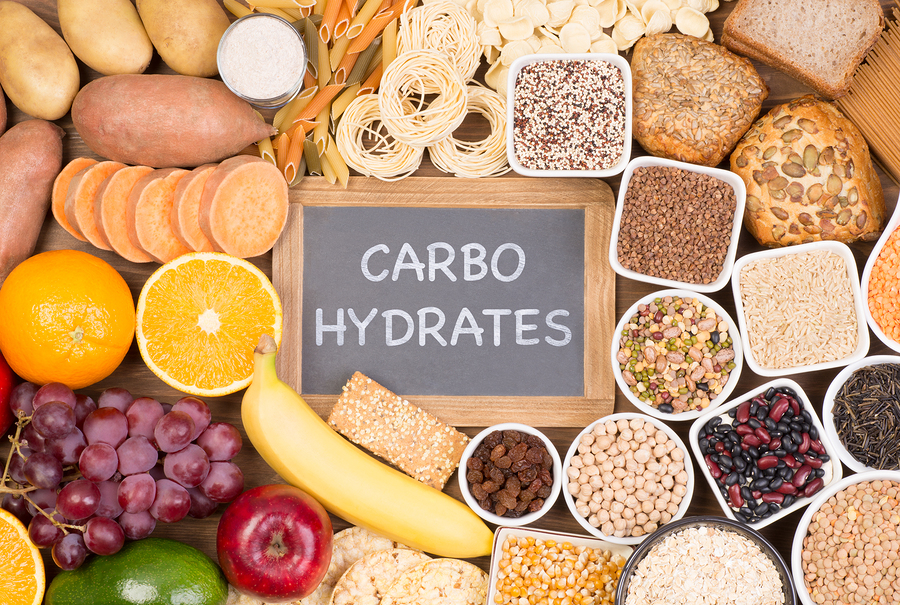Carb counting is a tool for Type 1 and Type 2 diabetics for planning their diet. It involves tracking the carbohydrate intake on a daily basis. This plays a vital role in controlling the blood sugar levels.
When you eat carbohydrate consuming food, the sugar and starches are broken down into glucose which enters the bloodstream and increases the blood glucose levels. Hence, it is advisable to plan your diet based on carb counting.
The measuring unit for consumption of carbohydrates is grams. To calculate the grams of carbohydrate you consume on a daily basis, you need to know which food contains carbohydrates, estimate the number of grams present in the food you eat and add them up to find the total number you consume for the day.
Tips for counting carbs
- You should find out which of the food items you include in your diet plan contain carbs.
- If your food item has a label on it then you should check out the serving size and the total grams of carbs that are present in one serving. If you take more than one serving then you should calculate by multiplying the total number of carbs by the number of serving.
- If your food item does not have a label on it, then you should find out an exchange chart online and calculate the carb count. There are many online exchange charts available.
- If you are preparing food at home, then you should add up the grams of carbs of the ingredients that you are using while making the food. You should use measuring cups and a food scale to estimate the carb count. You can also find a recipe nutrient calculator which is easily available online.
- If you are ordering food from a restaurant, then there are many restaurants that have nutrition information that is available either on their menu or on their website. You can have a look at that and find out the carb count of the food item you wish to order.
- To find the total carb count for the day, you will have to add up the gram of carbs from each meal and snack you have during the day.
In this manner if you keep regular tabs on the food you eat and test your blood sugar levels on a regular basis, then you can easily figure out if the carb counting is working for you or not.
If you find the sugar count levels to be out of the targeted range the majority of the time, then it’s time you change your diet plan.
Foods containing Carbohydrates
Carbohydrate containing food includes:
- Grains, noodles, pasta, cereals, crackers and rice
- Apples, bananas, berries, mangoes, oranges and melon
- Dairy products : Milk and yogurt
- Dried beans and lentils
- Cakes, cookies, candy and desserts
- Juices, soft drinks and energy drinks containing sugar
- Starchy vegetables like potatoes, corn and peas.
It is best to consume meat, fish, poultry, most kinds of cheese, nuts and oils which do not contain carbohydrates.
The non-starchy vegetables that you can include in your diet without a second thought are: asparagus, broccoli, carrots, celery, green beans, lettuce, peppers, spinach, tomatoes, zucchini etc.
Importance of Carbohydrate counting
Carb counting helps to control your blood glucose levels. This gives you a healthy lifestyle by making you feel more energetic, prevents or delays diabetic problems like kidney disease, blindness and nerve damage. It also helps in preventing heart attacks and amputations.
Daily amount of carbohydrates diabetics need
Diabetics need enough quantity of carbs to fulfil the body’s need for energy, vitamins, minerals and fiber.
Experts suggest that on an average the carb count should be between the range of 45-65 percent of total calories. It is advisable that people following low calorie diet and those that are physically inactive should opt for lower side of that range.
You consume 4 calories when you take 1 gram of carbohydrate. To find the appropriate number of grams to consume you should divide the total number of calories by 4.
Example:
If you want to eat 1600 total calories in a day and want 45 percent of the calories from carbohydrates, you should include 180 grams of carbohydrates in your daily diet.
You can calculate as follows:
- Total amount of carb calories = .45 X 1600 = 720 calories
- Quantity of carbs = 720 / 4 = 180 grams of carbohydrates
Amount of Carbohydrates your food contains
It is very important to learn to estimate the amount of carbohydrates the food contains. There are certain apps that can help you with that or a Google search would be of great help.
These carbohydrate-rich food contains approximately 15 grams of carbohydrates:
- A slice of bread
- A 6-inch tortilla
- 1/3 cup of rice
- 1/3 cup of pasta
- ½ cup of fruits or fruit juice or small piece of fresh fruit
- ½ cup of pinto beans
- ½ cup of starchy vegetables like potatoes, corn, peas and lime beans
- ¾ cup of dry cereal and ½ cup of cooked cereal
- 1 tablespoon of jelly
Non-starchy vegetables contains very less amount of carbohydrates. You only need to count them when you consume them in large quantity.
In packed food you can find the amount of carbohydrates by checking the nutrition label. You should calculate the quantity you are consuming by multiplying the serving size with the amount of carbohydrates per serving.
Example:
- Serving size is 1.
- Amount of carbohydrates per serving is 15.
- And you consume 2 servings instead of 1 than,
- Total number of grams of carbohydrates = 15 X 2 = 30 grams
How to check if carbohydrate counting is effective
Check your blood glucose levels using a glucose meter. You should also have A1C blood test at least twice a year which reflects the average amount of glucose in last 3 months.
If your blood glucose levels are in control it is working effectively but if they are too high, you need to makes changes in your diet plan and lifestyle.





